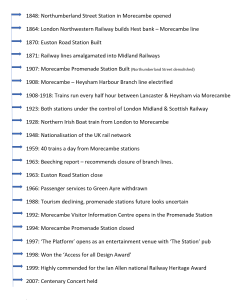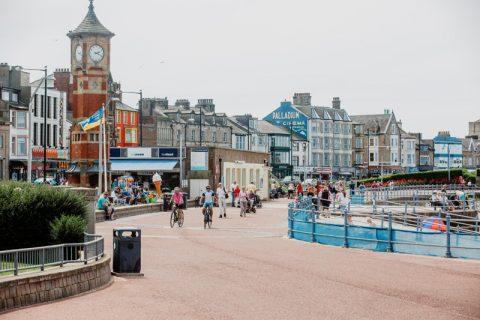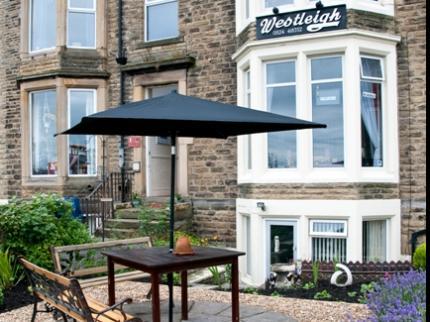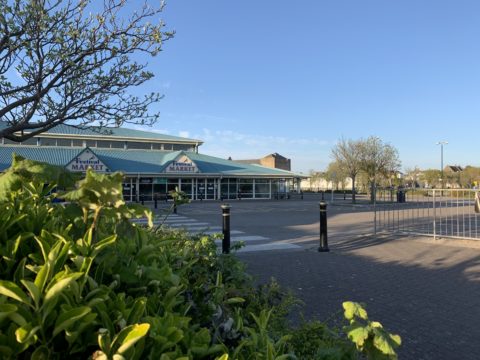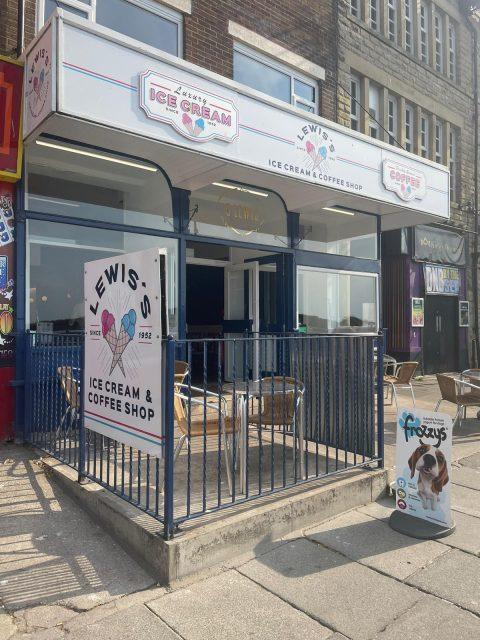Morecambe’s Railway Heritage
Morecambe Platform was built by the Midland Railway Company as the terminus of the former “little” North Western Railway to exploit the numbers of holidaymakers moving between Morecambe, Heysham and Lancaster and to provide a speedy service for port workers.
Morecambe Promenade Station first opened to passengers in 1907 and had four main platforms and a goods siding. Passengers using the facilities came from Leeds and Bradford as well as the West Coast of Scotland arriving overnight by rail to stay in the hotel before taking the boat to the Isle of Man and Barrow from the Stone Jetty.
The line was electrified in 1908 and ran trains every 30 minutes throughout the day. The station was very busy both before and after the first world war and the volume of passengers was such that many trains still had to use the Euston Road Station instead.

An interior view of Morecambe Promenade Station.
29th May 1960, The Reverend H D E Rokeby Collection, Historic England Archive
In 1923 the lines came under the ownership of the London, Midland and Scottish Railway. The station was officially named “Morecambe Promenade” and began to handle some services travelling to the town from Hest Bank once again.
Nationalisation in 1948 saw British Railways take over control of the station. Summer traffic was decreasing but there were still sufficient numbers visiting Morecambe in 1959 to require more than 20 scheduled and excursion trains to and from Euston Road and a similar number from Promenade.
As the next decade began however the future was looking uncertain following the publication of the Beeching Report. One of the recommendations of the report was that service provision to Morecambe needed to be modified, with one of the two routes. The Euston Road terminus was closed in 1963 and all services were permanently diverted to Promenade station.
Passenger services on the Green Ayre line were also withdrawn in 1966, along with most local trains to and from Heysham (though the boat trains from Manchester and London continued).
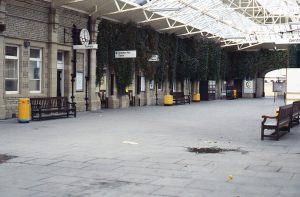
Morecambe Promenade Station in 1988
© Copyright The Carlisle Kid and licensed for reuse under this Creative Commons Licence.
Promenade station had survived the Beeching Axe, but by the late 1980s tourism in Morecambe was rapidly declining.
The station had remained largely unaltered and was far too large for the 1-2 trains per hour it now received. In 1993 the decision was taken to close Promenade Station and replace it with a new station situated slightly further inland and closer to the town centre. A final commemorative railtour visited the station the evening before its official closure on 7 February 1994.
After closure the station building remained intact. The Morecambe Visitor (Tourist) Information Centre has been based in the station since 1992 and it became an entertainment venue in 1997 when the pub-cum-restaurant “The Station” was opened, as well as the Platform Arts Centre. The station building has been sympathetically restored to its original Midland Railway condition and has won two design awards – the “Ian Allan National Railway Heritage Award” in 1999 (Highly Commended) and an “Access for All Design Award” in 1998. The old platforms, sidings and approach line were cleared soon after closure as part of the redevelopment plans. The town’s Festival Market now occupies part of the site along with a Morrison’s supermarket, and the rest is used as an access road to the new station and for car parking.
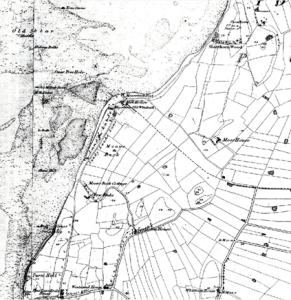
| This old map of the Morecambe area (c. 1840) shows that pre-the Victorian expansion, Morecambe did not exist! You can just see Sandylands Lane which is now a street of (mainly) Victorian terraced houses facing onto the Promenade, many of which are now flats. | |
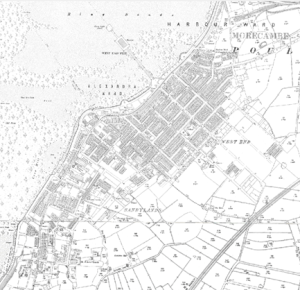 | And here is the later 1910 map showing the explosive growth of Morecambe and the railways. |
Timeline of development
